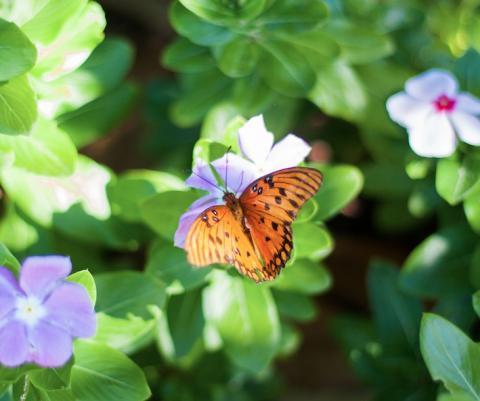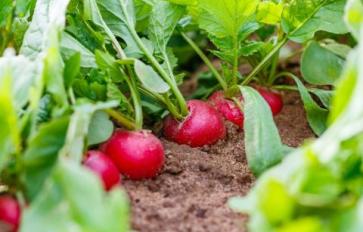
If you have a small section of your yard, you might want to consider planting a butterfly garden with your child. Children will watch and study insects of all types for long periods of time, and with a little wise planting, you will have an instant source of entertainment and learning.
Many common flowers attract both butterflies and hummingbirds. Here are a few:
- Buddleia or butterfly bush (for butterflies)
- Tequila salvias (for hummingbirds)
- Salvias (for both butterflies and hummingbirds)
- Milkweed (for butterflies)
- Echinacea (for both butterflies and hummingbirds)
- Penstemon (for hummingbirds)
- Lobelia (for hummingbirds)
- Hollyhocks (for hummingbirds)
- Verbena (for both butterflies and hummingbirds)
- Lantana (for both butterflies and hummingbirds)
- Zinnias (for both butterflies and hummingbirds)
- Snapdragons (for hummingbirds)
Planting for pollinators can be an important lesson to instill in your child. You can explain that, generally speaking, a flatter flower surface will attract butterflies, which they need in order to perch on their spindly legs. Hummingbirds generally go for tubular flowers, preferring red as a color. Teaching your child about wildlife can be an integral part of this experience. For example, share with them that hummingbirds have a proboscis (an elongated sucking mouthpart that is flexible, like a straw). Butterflies and hummingbirds are less efficient pollinators than bees, but certainly play their part.
While you are observing the butterflies and hummingbirds pollinating, it might be a good time to talk to your child about all pollinators, including bees. Many children are terrified of bees, even if they have never been stung. Teach your child the importance of pesticide free gardens. Show them the importance of buying organic plants. As with everything else, knowledge helps, so take a moment to explain the importance of pollination.
To find out how to demonstrate the importance of bees specifically for children, I asked Master Gardener Monette Meo. She teaches children at a local Bay Area school in California and understands how kids can be scared of bees.
Monette provides a “bee-free” picnic for the children. They have hot dogs, buns, onions, ketchup, cucumbers, tomatoes, mustard, relish, potato chips, lemonade and finish with chocolate chip cookies, but before they start she asks them to remove to the side anything that bees have not played a part in. One by one, every single food item has to be removed….even the chocolate chip cookies, since bees pollinate the cacao bean. Eventually all you are left with are the highly processed hot dogs, unless you use apple sausage! This is a very visual way of making the point with your child and can open up interesting conversations.
Life is miraculous and children still see it as such. You can see the wonder in their eyes when you raise caterpillars and observe the metamorphosis in front of you as they go into and emerge from their chrysalis. The trick for us as adults is to retain that sense of that wonder and awe at what is all around us.








